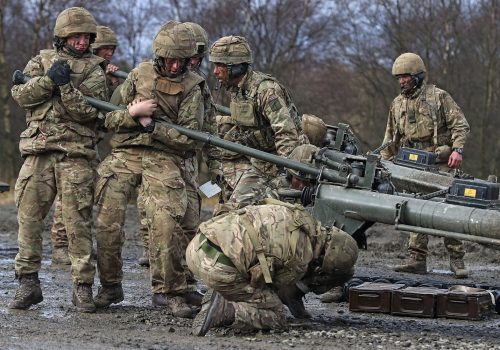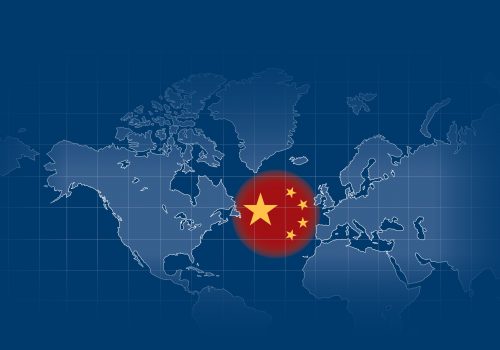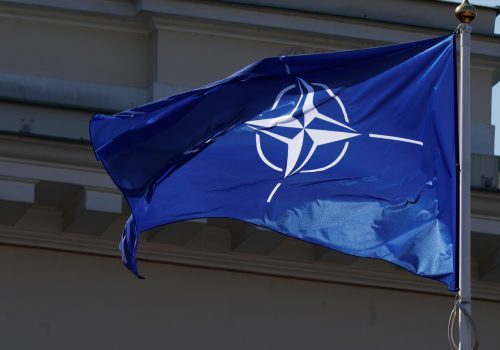FAST THINKING: A new era for NATO
GET UP TO SPEED
The band is back together. NATO allies focused on the challenges posed by China, Russia, climate change, and technology at a Monday summit in Brussels that was notable for its bonhomie. How will the meeting shape NATO’s future, and what cracks did it reveal in the Alliance? What message did the allies send Vladimir Putin just ahead of US President Joe Biden’s meeting with the Russian leader? Our experts are here to brief you.
TODAY’S EXPERT REACTION COURTESY OF
- Christopher Skaluba: Director of the Scowcroft Center’s Transatlantic Security Initiative and former principal director for European & NATO policy at the US Defense Department
- Leah Scheunemann: Deputy director of the Transatlantic Security Initiative and former Pentagon official focused on international security policy
- Franklin D. Kramer: Atlantic Council board director, distinguished fellow, and former assistant secretary of defense for international security affairs
Back to the future
- Chris points out that meetings were running long Monday: “Like many vaccinated families reuniting after the pandemic, NATO leaders were clearly excited to be back together.”
- The summit communiqué is seventy-nine paragraphs long, he notes, “a far cry from the nine-paragraph declaration” at the 2019 summit, when “leaders walked on eggshells trying to avoid—and avoid provoking—[then-US President Donald] Trump.” The communiqué length alone, Chris adds, “may be the truest signal that NATO is back to old ways of doing business.”
- The old ways, but not the old themes. Chris observes that the document addresses fresh challenges such as climate change and China. Biden reaffirmed “US support for Article 5, including explicit callouts in the communiqué of its applicability to hybrid, cyber, and space threats.” The statement, “while not new, indicates a renewed emphasis on and modernizing of the Washington Treaty’s most important element.”
- What’s out? A focus on the burden-sharing metric of spending at least 2 percent of GDP on defense. “While the communiqué renews the commitment to the 2014 Defense Investment Pledge and laughably claims that two-thirds of allies still ‘intend’ to meet their spending commitments, there was a clear attempt to de-prioritize and de-politicize the issue,” Chris says.
- Despite its length, our experts pointed out several holes in the document. Chris notes the Arctic did not get a mention. Leah wanted to see a focus on “improving NATO’s public-diplomacy efforts to target younger generations.” Frank points out the absence of a strategy against bioweapons. “Whatever the origin of COVID-19, the pandemic underscores the enormous vulnerability that exists from biological warfare,” he says. “NATO should organize, in collaboration with other organizations, a significant scientific program that could reduce and be responsive to such vulnerabilities.”
Friction on Ukraine and Afghanistan
- Ukrainian President Volodymyr Zelenskyy made waves during the summit by urging a clear “yes” or “no” from Biden on Ukraine’s long-stalled efforts to join the Alliance. Biden replied at a news conference that “school’s out on that question,” saying that Ukraine must still clean up corruption and make other reforms en route to membership.
- Leah tells us that NATO’s Ukraine policy remains unchanged. Though the communiqué says that Ukraine will join the Alliance, it “does not officially provide Ukraine with a [Membership Action Plan], noting further reforms are needed even while applauding Ukraine’s ‘significant reforms’ taken so far.”
- Given how extensively the NATO communiqué details Russia’s aggression in Ukraine, election meddling, and other offenses, Frank is also looking for more specifics on an allied response: “It seems fair to ask, given the extensive list of Russian hybrid actions identified by NATO, just how much more harm needs to be incurred before NATO undertakes [efforts] to impose costs. Actions will speak louder than words.”
- Despite the Biden administration’s reported lack of consultations with allies on its military withdrawal from Afghanistan, NATO members agreed on “several concrete steps forward,” Leah says. Most notable for her was continued NATO funding of the Kabul international airport, which Turkey has also offered to secure with its troops.
The China “challenge”
- For the first time, the NATO communiqué takes on China, declaring that Beijing poses “systemic challenges to the rules-based international order and to areas relevant to Alliance security.” What’s behind the diplomatese? Chris says “NATO will clearly have an increased focus” on China, but “reading between the lines, there is an uneasy consensus among allies on what this means.”
- That uneasy consensus meant a lot of challenges to NATO infrastructure were left out of the document—including 5G networks built by the Chinese telecom company Huawei, China’s cyber espionage, and Beijing’s “unfair trade practices,” Frank says. “And entirely absent is any discussion of the impact of a conflict in the Indo-Pacific involving the United States, even though that would have a highly consequential impact for Europe and Canada,” Frank points out.
- As it grapples with China and other emerging challenges that could not have been foreseen at its 1949 founding, NATO continues to be “indispensable” as a means of coordinating “defense strategies” and creating “transatlantic cohesion,” Frank argues. Now comes a year-long process to develop the Alliance’s new Strategic Concept. At this pivotal moment, he adds, the Alliance’s “challenge is to continue its indispensable nature in the face of the changing security environment and to turn the markers it identified [at the summit], such as emerging technologies, into materially effective programs.”
Further reading
Thu, Jun 3, 2021
China is a present danger to Europe. NATO’s defense plans must respond.
New Atlanticist By John R. Deni
In not emphasizing threats from China in the DDA, the Alliance comes up short. China isn’t some challenge of tomorrow or threat that has yet to fully form; even today, it is a clear and present threat to allied security in Europe and beyond.
Mon, Mar 22, 2021
The China plan: A transatlantic blueprint for strategic competition
Issue briefs and reports By
China presents the United States and its partners with the most serious set of challenges they have faced since the Cold War. To manage this challenge, transatlantic nations need a blueprint to build a common approach.
Thu, Oct 15, 2020
Five big questions as America votes: NATO
Elections 2020 By
Although US leadership will continue to be the driving force behind NATO’s strategy, direction, and solidarity going forward, the extent of the United States’ commitment to the Alliance and its future role is still being called into question.
Image: US President Joe Biden and NATO Secretary-General Jens Stoltenberg greet each other after the NATO summit in Brussels, Belgium on June 14, 2021. Photo via REUTERS/Kevin Lamarque.


